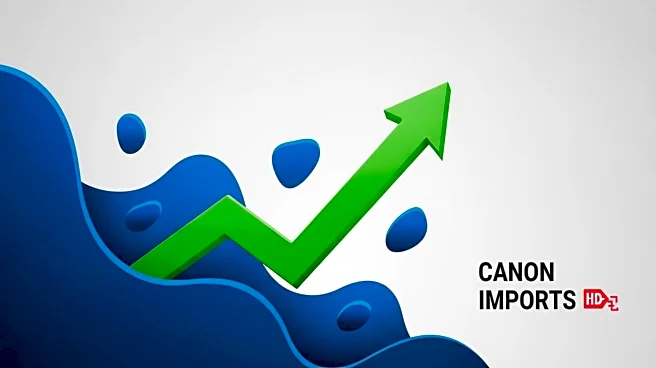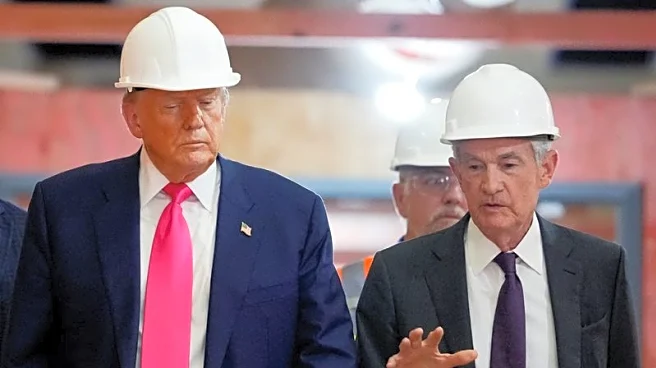Rapid Read • 7 min read
The U.S. economy experienced a stronger growth rate in the second quarter than initially reported, according to the Commerce Department's Bureau of Economic Analysis. The revised GDP growth rate is now 3.3%, up from the previously estimated 3.0%. This adjustment is attributed to increased consumer spending and business investment, particularly in intellectual property products like artificial intelligence. Despite this positive revision, the economic outlook remains clouded by ongoing trade tensions and tariffs imposed by President Trump's administration. These tariffs have raised import duties to historic levels, affecting various sectors, including manufacturing and retail. Companies like Caterpillar and General Motors have reported significant financial impacts due to these trade policies.
AD
The revised GDP figures highlight the resilience of the U.S. economy, driven by consumer spending and technological investments. However, the persistent trade tensions pose a risk to sustained economic growth. The tariffs have led to increased costs for businesses, potentially slowing down investment and expansion plans. This situation underscores the delicate balance policymakers must maintain between fostering economic growth and managing trade relations. The Federal Reserve's response, including potential interest rate adjustments, will be crucial in navigating these economic challenges. The broader impact on industries and consumers will depend on how these trade policies evolve and their long-term effects on the U.S. economy.
Looking ahead, the Federal Reserve is expected to consider interest rate cuts in response to the mixed economic signals. The central bank's upcoming policy meeting in September will be closely watched for any changes in monetary policy. Additionally, businesses and economists will continue to monitor the impact of tariffs on corporate profits and consumer prices. The labor market's performance, particularly in terms of unemployment rates and job creation, will also be a key indicator of economic health. As trade negotiations progress, any shifts in policy could significantly influence the economic landscape.
AD
More Stories You Might Enjoy












